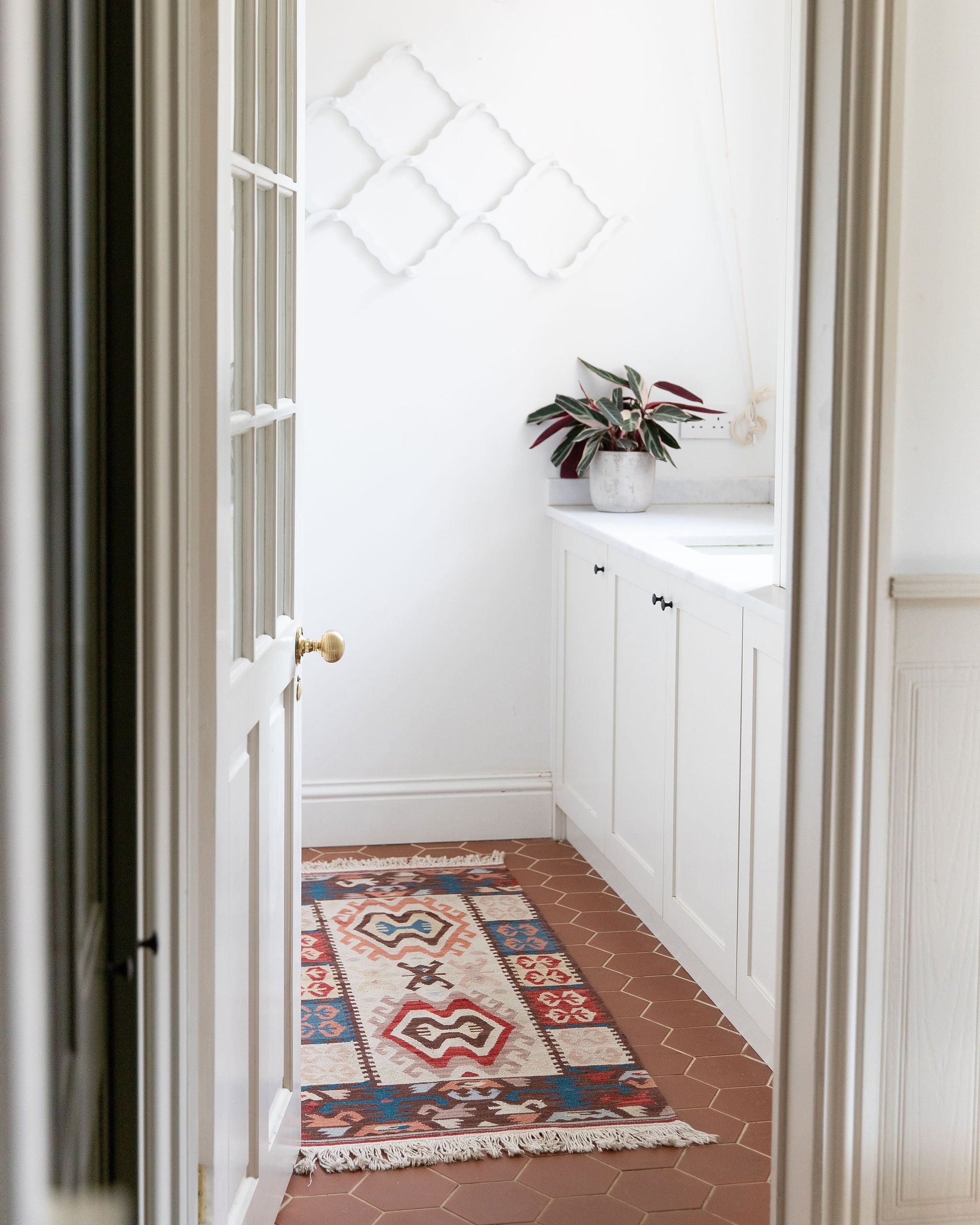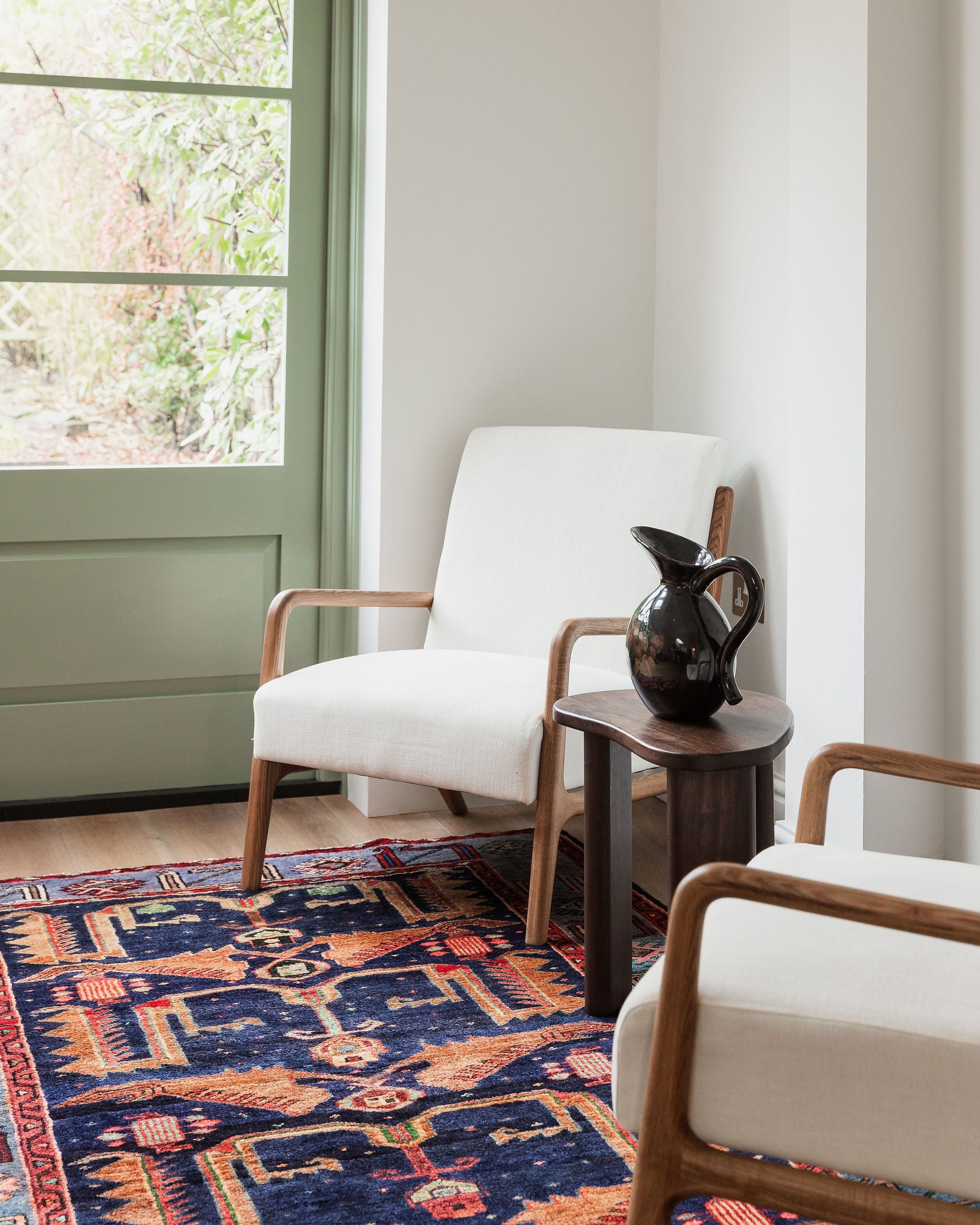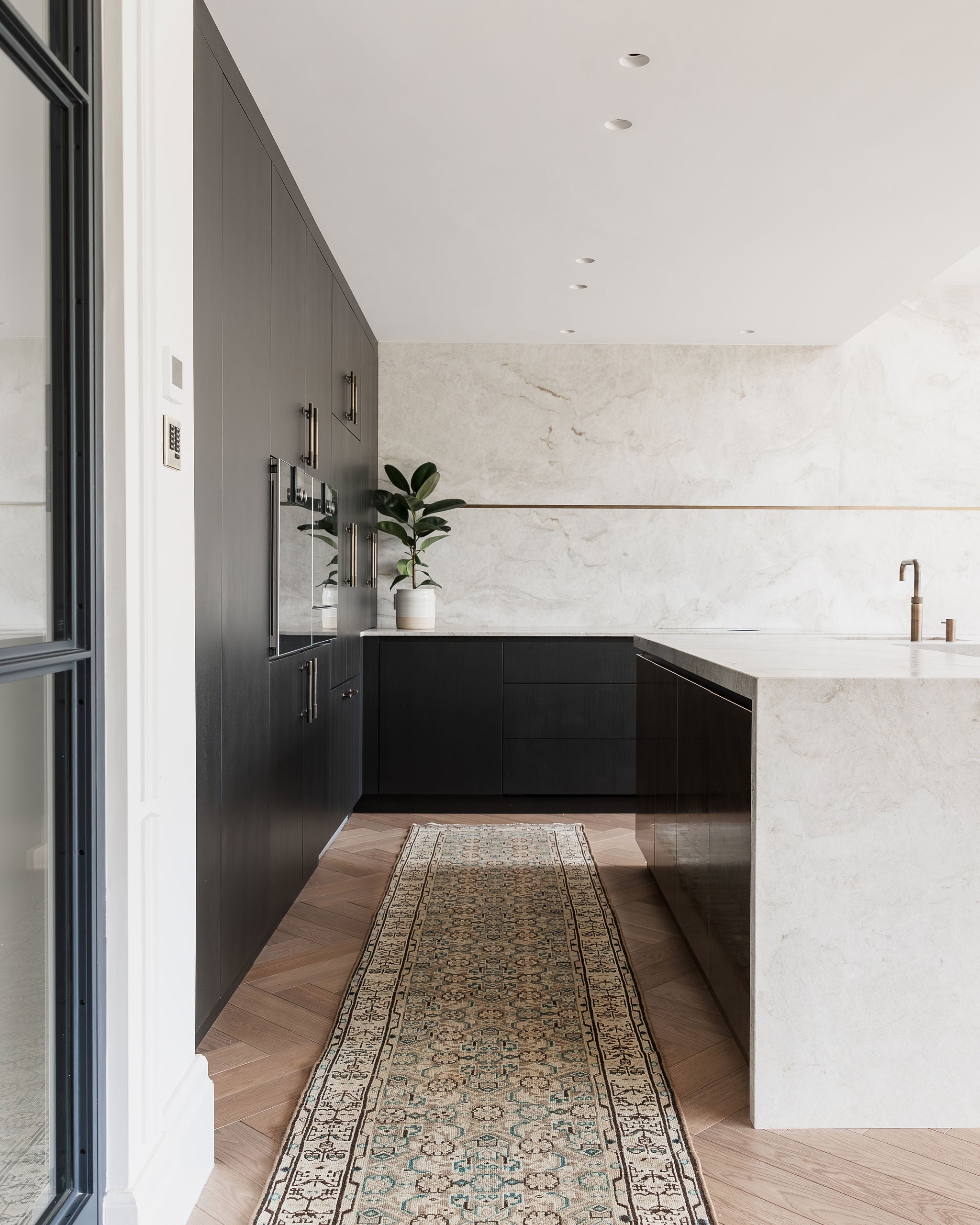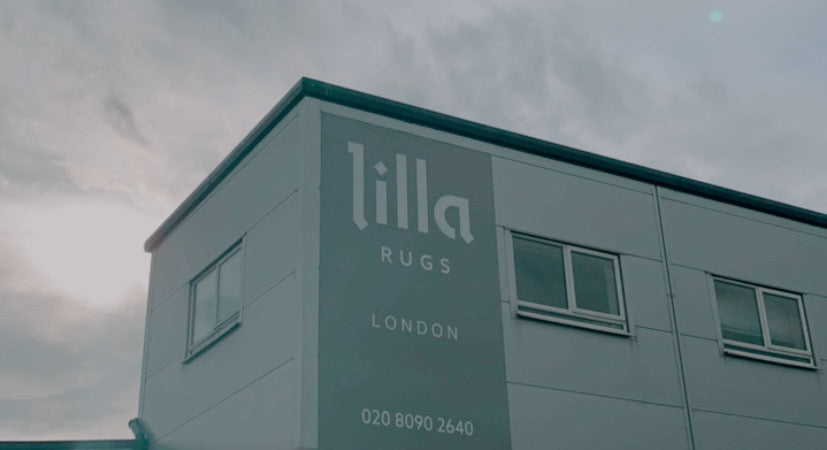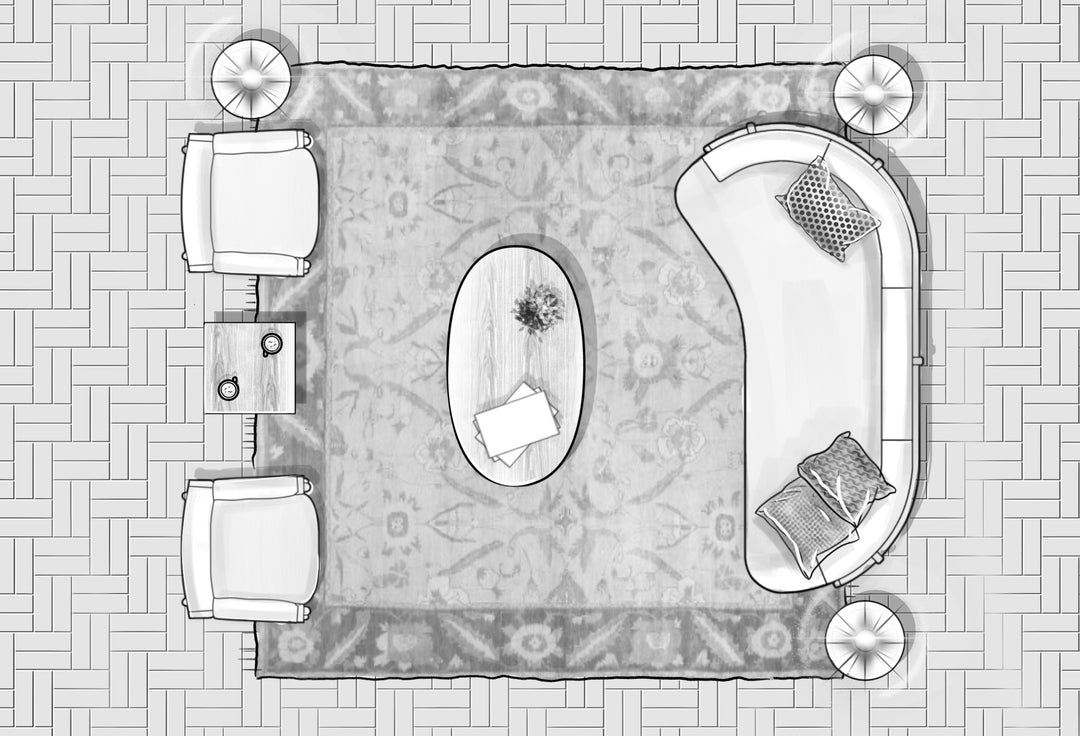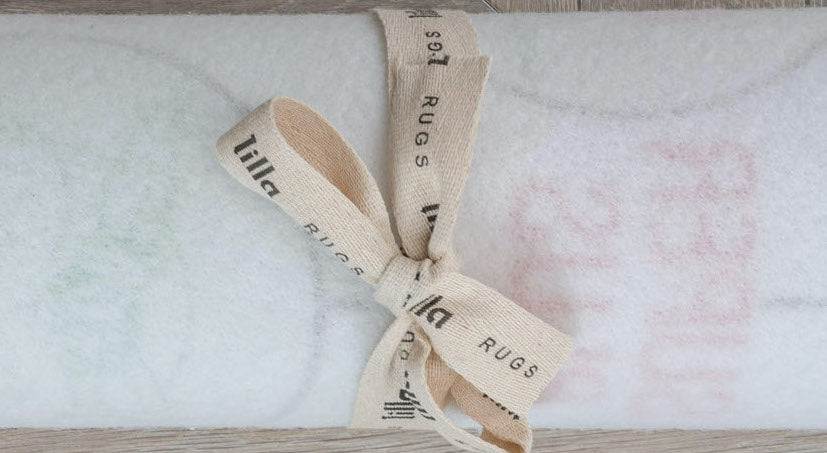Spotlight: Persian Mahal Rugs
Persian Mahal rugs are one of the most celebrated and highly prized types of Persian carpets, known for their rich history, intricate designs, and vibrant colours. Steeped in tradition, these rugs offer a glimpse into the deep cultural heritage of Iran and its influence on the world of textiles. Let's take you through the history of Persian Mahal rugs, exploring their origins, evolution, and enduring appeal.
Origins: A Weaving Tradition from Central Iran
Mahal rugs come from the historic Mahal region, located in the Arak province of central Iran. The city of Mahallat and the surrounding villages were key centres of rug production, with artisans in this area weaving carpets as early as the 19th century. These rugs were often referred to as “Mahal” because of their regional origin, though the rugs from nearby Sarouk and Sultanabad (now known as Arak) are sometimes grouped under this category.
The Persian Mahal rug's roots can be traced to the larger Persian weaving tradition, which dates back to ancient Persia. Persian rugs have been made for thousands of years, with evidence of carpet weaving found in ancient Persian tombs, palaces, and temples. However, the Mahal rugs gained prominence during the late 19th century, particularly as demand for Oriental rugs surged in Europe and the United States.
The Influence of Sultanabad and Export Markets
One of the key turning points for Persian Mahal rugs was the establishment of Sultanabad (now Arak) as a major rug weaving centre during the 19th century. The region became famous for its production of high-quality rugs, particularly as European and American markets began to show increasing demand for Persian rugs. The export market greatly influenced the designs and styles of these rugs.
During the late 19th and early 20th centuries, European companies established partnerships with Persian weavers to produce rugs tailored to Western tastes. Mahal rugs were particularly popular in these markets due to their large, room-sized dimensions and aesthetically pleasing designs. The designs often featured floral motifs, medallions, and geometric patterns, blending traditional Persian artistry with modern, Western influences.

Rug featured: ACTON
Design Characteristics of Persian Mahal Rugs
The beauty of Persian Mahal rugs lies in their distinctive designs and colour palettes. Unlike more formal and precise city rugs, Mahal rugs are known for their casual elegance, featuring more free-flowing and less rigidly symmetrical patterns. The designs are often large-scale, with prominent medallions, vine and floral patterns, and bold geometric shapes.
A common motif found in Mahal rugs is the Herati design, a combination of a rosette surrounded by leaves and fish, arranged in a diamond shape. Another popular pattern is the Gul Farang, featuring European-style floral bouquets that reflect Western influences. Mahal rugs are typically woven with wool and are noted for their durability, making them ideal for both decorative and functional purposes.
Colour plays a crucial role in defining the character of Mahal rugs. Weavers from the region employed a wide range of natural dyes, producing rich and vibrant hues. Reds, blues, ivory, and earthy tones dominate the colour schemes, with the use of indigo and madder being particularly common. The combination of soft, natural colours and intricate designs gives Mahal rugs their timeless charm.
They have also been used as a popular rug for the distressed process. The design of the Mahal rugs are preserved, but they are given that much desired worn effect we are all after, with a softer colour combination.

Rugs (left to right): ARLO, ARONA, FAI
Craftsmanship and Techniques
The craftsmanship behind Persian Mahal rugs is a testament to the skill and dedication of the weavers. These rugs are hand-knotted using the traditional Persian knot, or “Senneh knot,” which contributes to their durability and quality. The knot density of Mahal rugs is typically lower than that of city rugs such as Isfahan or Tabriz, but this lower knot count allows for the larger, more spacious designs that are characteristic of Mahal rugs.
The weaving process is meticulous and time-consuming, with artisans working on vertical looms for months or even years to complete a single rug. The wool used in Mahal rugs is often of high quality, contributing to their softness and longevity. This dedication to craftsmanship has made Persian Mahal rugs highly sought after by collectors and interior designers alike.
Decline and Resurgence
While Persian Mahal rugs enjoyed immense popularity in the late 19th and early 20th centuries, their production began to decline in the mid-20th century. Factors such as political instability in Iran, competition from other rug-producing countries, and changing market preferences led to a decrease in demand for traditional Persian rugs.
However, in recent years, there has been a resurgence of interest in Persian Mahal rugs, especially among collectors and enthusiasts of antique rugs. The unique designs, high-quality craftsmanship, and rich history of these rugs have once again captured the attention of the global market. Modern designers and homeowners are increasingly incorporating antique Mahal rugs into contemporary interiors, blending tradition with modern aesthetics.
The Enduring Legacy of Persian Mahal Rugs
Persian Mahal rugs are more than just floor coverings; they are works of art that carry the legacy of Persian culture and craftsmanship. With their intricate designs, vibrant colours, and rich history, these rugs have transcended time, remaining a symbol of elegance and sophistication.
For collectors, designers, and lovers of fine textiles, Persian Mahal rugs represent a bridge between the past and present, connecting us to the artisans who wove these masterpieces over a century ago. As they continue to grace homes, galleries, and museums worldwide, Persian Mahal rugs remain a testament to the enduring beauty and craftsmanship of Persian rug weaving.


